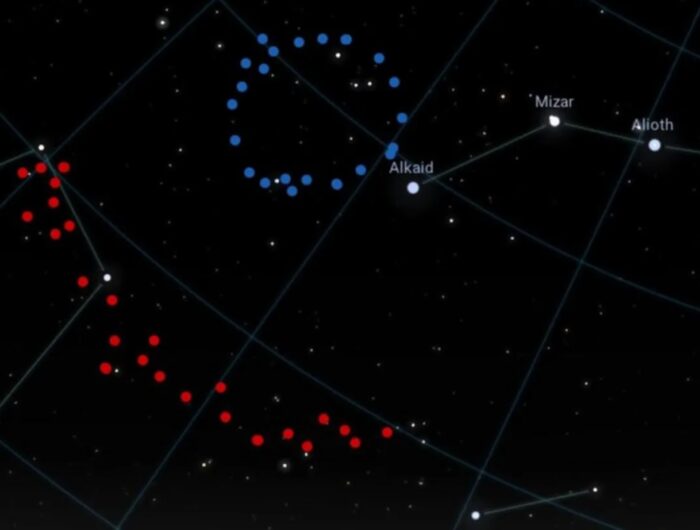Jan 12 2024
Big Ring Challenges Cosmological Principle
 University of Central Lancashire (UCLan) PhD student Alexia Lopez, who two years ago discovered a giant arc of galaxy clusters in the distant universe, has now discovered a Big Ring. This (if real) is one of the largest structures in the observable universe at 1.3 billion light years in diameter. The problem is – such a large structure should not be possible based on current cosmological theory. It violates what is known as the Cosmological Principle (CP), the notion that at the largest scales the universe is uniform with evenly distributed matter.
University of Central Lancashire (UCLan) PhD student Alexia Lopez, who two years ago discovered a giant arc of galaxy clusters in the distant universe, has now discovered a Big Ring. This (if real) is one of the largest structures in the observable universe at 1.3 billion light years in diameter. The problem is – such a large structure should not be possible based on current cosmological theory. It violates what is known as the Cosmological Principle (CP), the notion that at the largest scales the universe is uniform with evenly distributed matter.
The CP actually has two components. One is called isotropy, which means that if you look in any direction in the universe, the distribution of matter should be the same. The other component is homogeneity, which means that wherever you are in the universe, the distribution of matter should be smooth. Of course, this is only true beyond a certain scale. At small scale, like within a galaxy or even galaxy cluster, matter is not evenly distributed, and it does matter which direction you look. But at some point in scale, isotropy and heterogeneity are the rule. Another way to look at this is – there is an upper limit to the size of any structure in the universe. The Giant Arc and Big Ring are both too big. If the CP is correct, they should not exist. There are also a handful of other giant structures in the universe, so these are not the first to violate the CP.
The Big Ring is just that, a two-dimensional structure in the shape of a near-perfect ring facing Earth (likely not a coincidence but rather the reason it was discoverable from Earth). Alexia Lopez later discovered that the ring is actually a corkscrew shape. The Giant Arc is just that, the arc of a circle. Interestingly, it is in the same region of space and the same distance as the Big Ring, so the two structures exist at the same time and place. This suggests they may be part of an even bigger structure.
How certain are we that these structures are real, and not just a coincidence? Professor Don Pollacco, of the department of physics at the University of Warwick, said the probability of this being a statistical fluke is “vanishingly small”. But still, it seems premature to hang our hat on these observations just yet. I would like to see some replications and attempts at poking holes in Lopez’s conclusions. That is the normal process of science, and it takes time to play out. But so far, it seems like solid work.
If her observations hold up, then the Big Ring would be the seventh such giant structure that violates our current formulation of the CP. This is also how science works. The Cosmological Principle is based on both observation and our theories about how the universe works, as well as its origins and history. It’s not just a guess or an aesthetic wish. Scientists have very good reasons for supporting the CP. But in recent years the number of apparent violations of the CP have been growing. This is often how it works in science – the number of problems or exceptions to a theory grows until the theory has to be abandoned or significantly modified. What might be going on here?
There are already a number of hypotheses to explain these giant structures. Perhaps there was some effect at work in the very early universe, shortly have the Big Bang, and this created ripples in the cosmos. These ripples would be like pressure waves, which would affect star and galaxy formation. Are we seeing the distant echo of these ripples? More specifically, there is the cosmic string idea, with the strings being filamentary defects in the distribution of matter after the Big Bang. There is also Conformal Cyclic Cosmology (CCC), a cosmology proposed by Roger Penrose. Apparently such structures might be a sign of CCC.
What we have in the Big Ring is a possible piece to a very big puzzle. First astronomers will need to confirm that it is a real piece, and not some statistical error, systematic bias in data analysis, or statistical fluke. If it holds up then cosmologists will have to work out what the theoretical implications are, and propose testable alternative hypotheses that would account for this cosmology. And the process of science grinds on.






